Gyönyörű nap volt ma az öböl környékén, így hát felfelé vettem az irányt Napába és a Pápa-völgybe. Új területet kerestem egy kis virágmoly számára, Speedy Heliolonche, hogy láthatóan egybefüggő szép idő megjelenésére vár. Ez a szezon egy kicsit késik a sok hideg és eső miatt, de remélem, hogy néhány héten belül sikeres visszatérő látogatást teszek. Viszont, Találkoztam egy maroknyi gyönyörű mikrolepettel. Mindezek a lepkék a nemzetségbe tartoznak ADELE és a család Adelidae (vagy egyesek azt mondanák énncurvariidae). Közismert néven “tündérmolyok” mert úgy tűnik, virágfoltokon táncolnak – amit láthatóan a tündérek szeretnek csinálni. Úgy tűnt, hogy a hímek egy kis területet védenek, egyszerre kettő-hárommal, egymás körül forogva néhány centiméterrel a virágok felett. Feltételezem, hogy ezek a táncok területiek voltak, mert nem figyeltek meg párzást. Míg a nőstényeknek hosszú antennájuk van, a hímek túlzásba veszik. Összegyűjtöttem egy szép sorozatot, de én még nem szögezték le a fajt – hányat látsz? Szerencsére, minden Adelidae borították a 1969 Jerry Powell papírja, aki történetesen szintén tőlem az utcában lakik.
Miután átnézte a gyűjteményeket itt, a CAS-ban, és elolvasta a monográfiát, úgy tűnik a legtöbb ilyen Adela trigrapha. Ez egy gyakori Adelid a San Francisco-öbölben és Kalifornia legtöbb tengerparti tartományában. Az eltérések jelentősek, törött és töretlen sávokkal, valamint a vörös variációjával a koronán. A másik Adelid könnyen azonosítható Adela lángol rám.
Adela trigrapha Zeller 1875
(több kép szünet után)
Adela trigrapha Zeller 1875
Adela lángol rám Chambers 1876
Adela trigrapha Zeller 1875
Adela trigrapha Zeller 1875
Adela trigrapha Zeller 1875
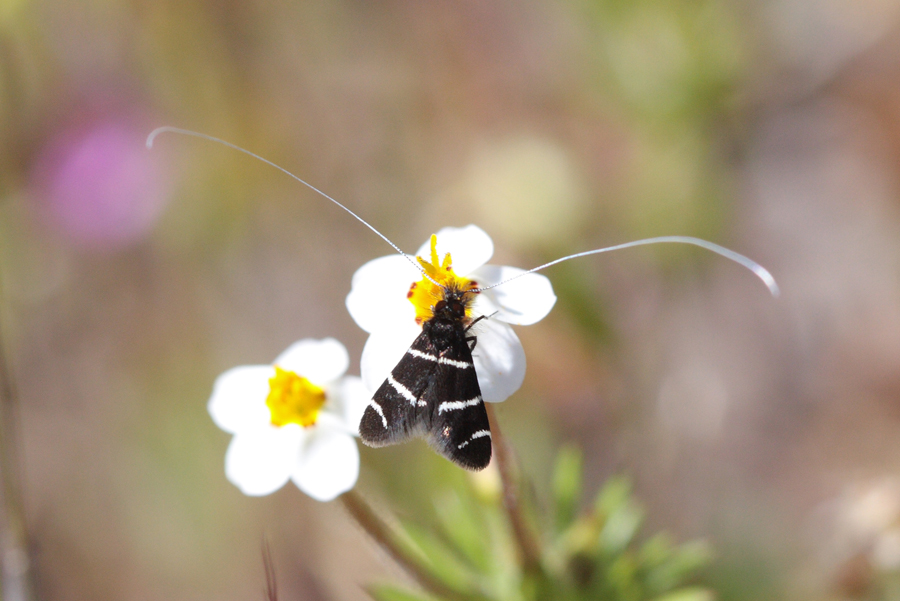
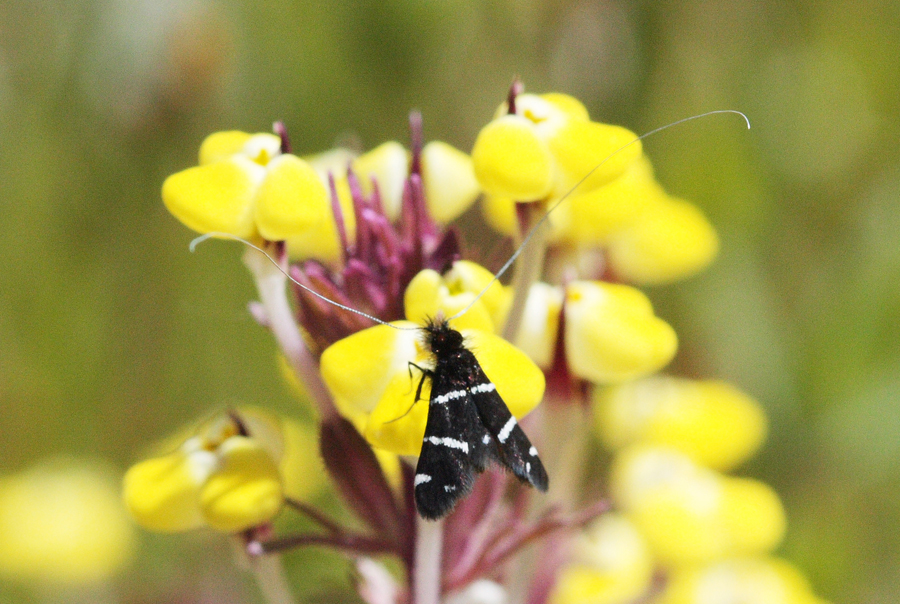
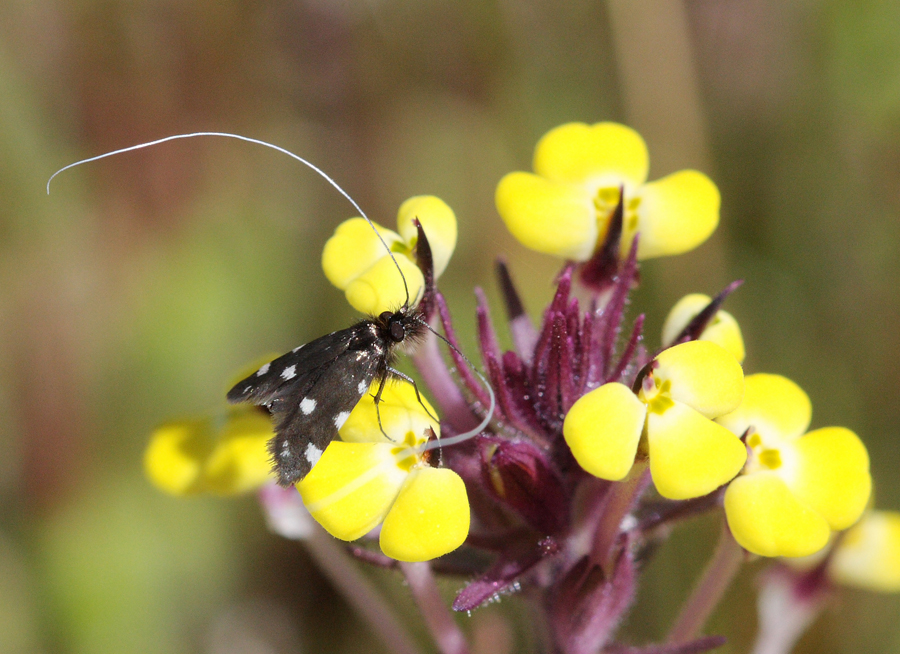
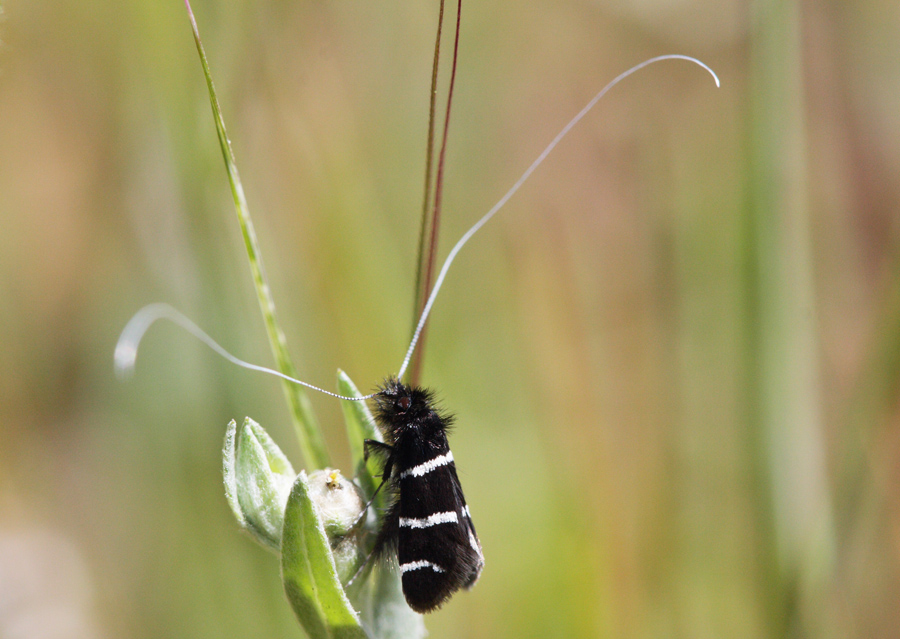
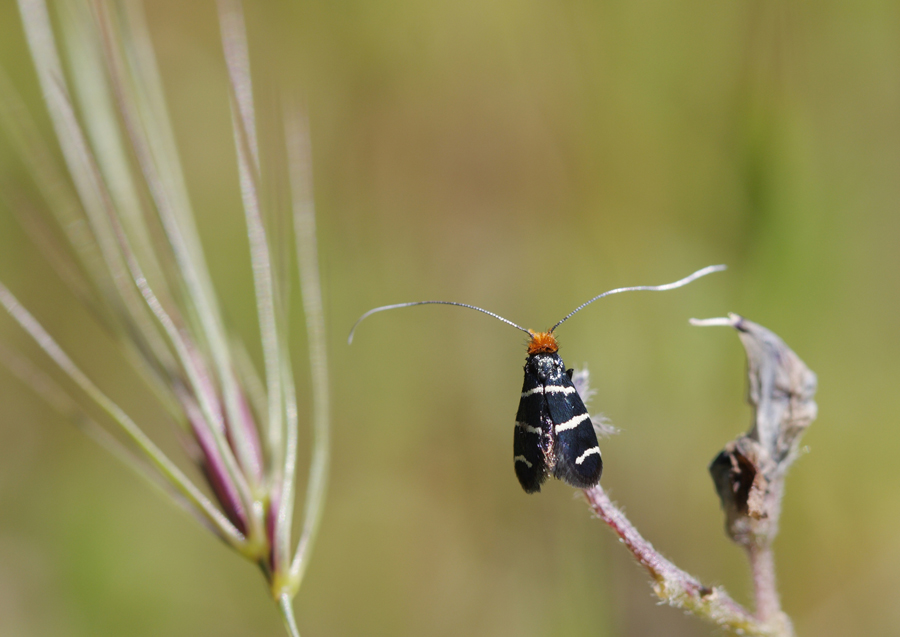
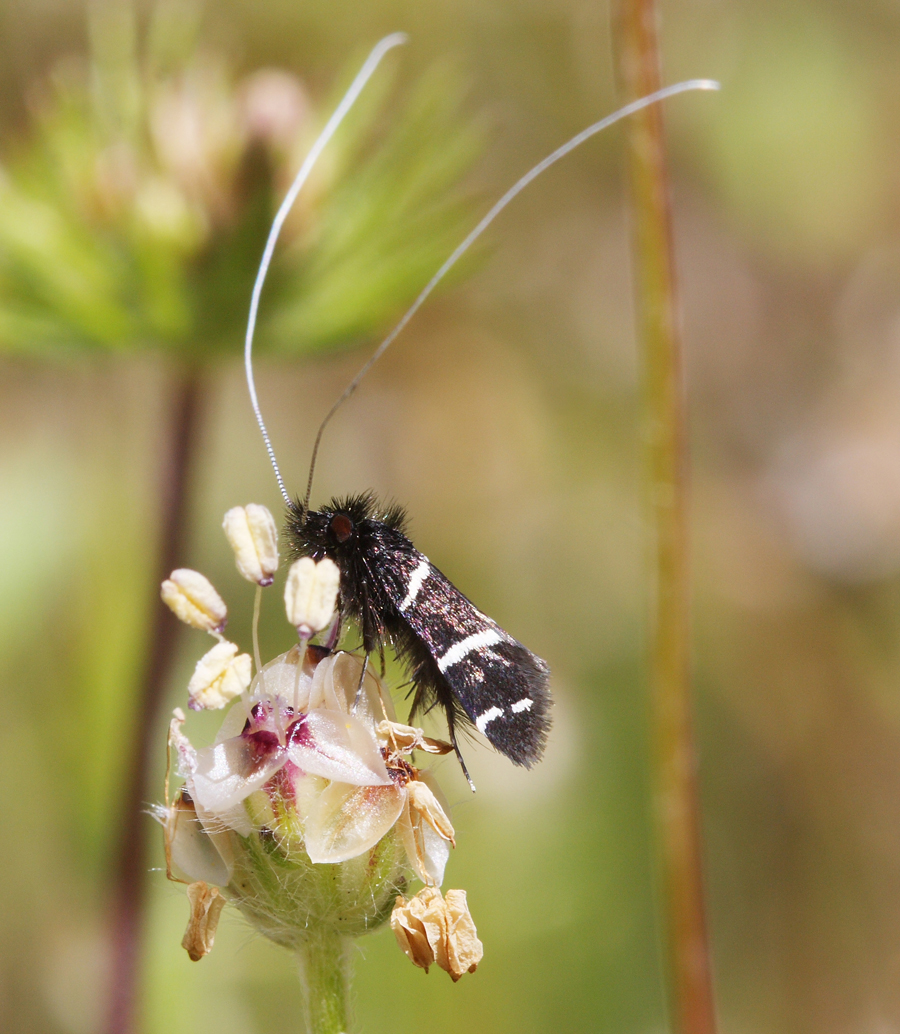

Must be at least three species – what about the one with the orange head? The markings are like those in photos 1 és 4, but the antennae don’t look as long and I’m wondering if this is sexual dichroism.
I hung out with a moth guy in my early days, who introduced me to “Incurvariidae.” They’re quite small as I recall – must be quite a challenge to mount.
Chris
Very unusual moth. To me it looks like a stag horn moth. How big is the wing span?
Yes I’m thinking 3 as well. I thought dimorphism at first too, but reading Powell it sounds like there are 2 species that are both supposed to have orange on the head to varying degrees. Nem is említve, they shouldn’t overlap in range. It’s the ones without the orange that are more puzzling! I’ll just have to go over to Berkeley and have Jerry put names on them.
I kind of cheat by mounting my micros upside down – and I’m trying to illustrate exactly how I do it so I can add it to the techniques section.
And as far as micros go these guys are big! About 12mm wing tip to wing tip.
I love these little moths!…used to see them often while hiking along the coastal trails at Pt Reyes, on Calochortus tolmei.
Not which species though, perhaps you can put a name to it?
http://bobabela.com/California-Nature/Insects-Spiders/7263324_oXTZd#466874794_R7RiX
Updated, looks like they are all the same. Bob – your moth would also be A. trigrapha.
Ah, so two species rather than three – the post apical band can be complete or broken, but what about the orange head?
Köszönet Chris.
It’s still confusing. Males have the orange, which varies considerably. There is still a chance some of these are Adela eldorata, which more commonly has a bright orange crown. I’ll still have Powell sort these specimens out and tell me the verdict.
All the monograph says in regards to the red on A. trigrapha is “… and a few to several orange scales at the back of the crown.” No note on dimorphism.
[…] Grinter, at The Skeptical Moth, goes moth tasting in the Napa Valley and photographically samples some intoxicating vintages of Adelidae fairy […]
[…] Adela trigrapha (Moth Tasting in Napa) […]
[…] since I saw Chris Grinter’s beautiful photographs, I have wanted to see (and possibly photograph) the tiny little moths known as fairy moths (család […]